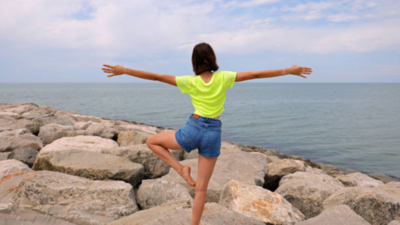Parkinson’s disease is a chronic progressive neurodegenerative disease that is characterized by motor symptoms, that is, tremor, bradykinesia, and rigidity, all of which contribute to impaired smoothness and coordination of muscle movements. It happens when nerve cells in the brain, especially those that produce a certain chemical known as dopamine, are damaged. This is another critical and debilitating motor symptom that greatly increases fall risk and negatively affects quality of life.
Postural instability, or postural control impairment, is another major motor symptom with an impact on balance and fall risk (Bergquist et al., 2015). This instability will have static and dynamic aspects due to impaired postural reflexes, slowness and stiffness. Genetic risk factors and age-related decline in (postural) sensory and motor function also contribute to postural instability in people with PD. Postural instability is a major contributor to falls, injuries, and impaired quality of life.
Medications used to treat PD can often lead to side effects, one of which may become dyskinesias (involuntary movements) which in turn can compound balance problems.
Balance exercises are shown to prevent falls, improve quality of life, and also improve cognitive function in patients with Parkinson’s disease. Balance training consists of two types of exercises.
- Static standing balance
- Standing facing a chair
- Standing (heel-to-toe)
- Standing on one leg
- Side weight shift
- Dynamic balance
- Tandem walking – walking heel to toe
- Sideways stepping
- Wall leans
- Reverse walking
The flamingo exercise is a simple balancing training that means standing on one leg like the way the bird stands. It builds balance and stability and lower-body strength, making it a good choice for recovering athletes, older adults, and people with conditions such as Parkinson’s. As per a study published in the Journal of Back and Musculoskeletal Rehabilitation, “dynamic flamingo therapy combined with balance exercises with a static posturography device improves balance disorder in PD patients compared to therapy restricted to individual training.”
Balance training tips: How to do it if done well, safe
- Start slowly
- Do not miss medications (potential worsening of motor symptoms)
- Use support
- Relaxed breathing
- Add in progression to more challenge such as ground svays, uneven evoke and run multi multi-tasking.
- Using external cues, such as verbal or proprioceptive feedback, can enhance balance.
- Include new equilibrium practices into daily exercises, for example, when strolling, turning around, preparing or utilizing cutlery, preparing the showcase, closet, etc.
Dr. Amrut SD, Associate Consultant – Neurology, Manipal Hospitals Goa






